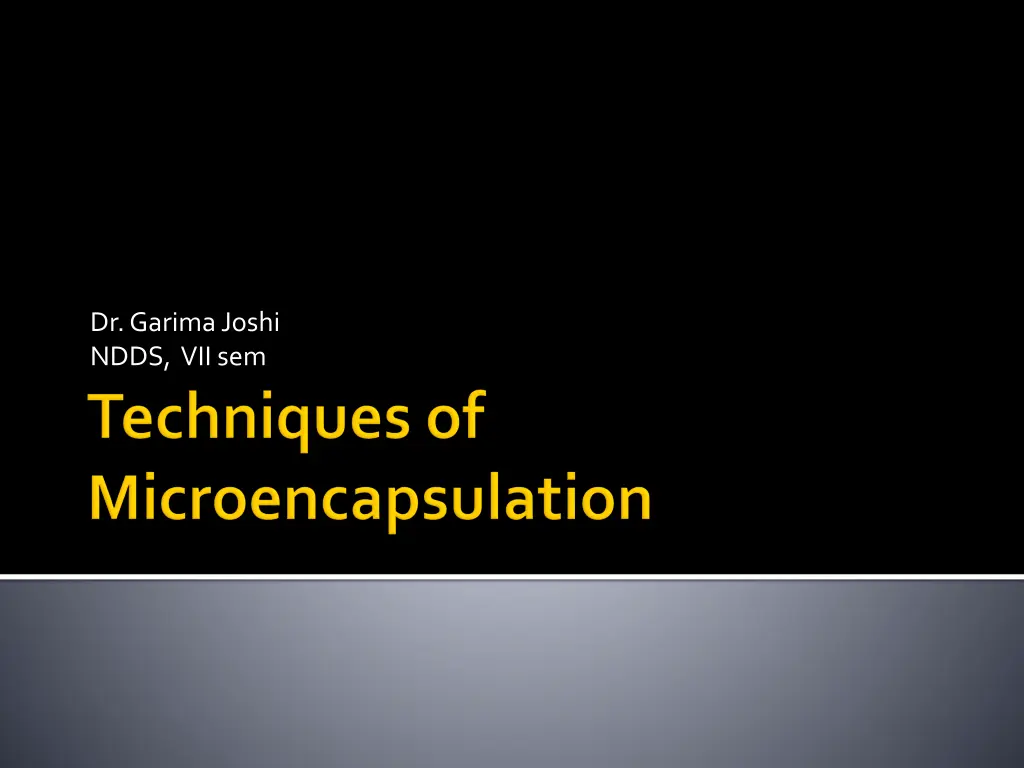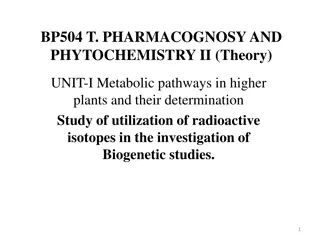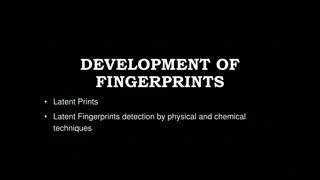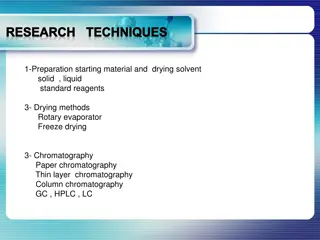
Techniques and Applications of Microencapsulation in Pharmaceuticals
Explore the intricacies of microencapsulation in pharmaceuticals, delving into the methods, considerations, and applications involved. From the stability of drug compounds to the intricate coating processes, this overview covers the essentials of this innovative technique.
Download Presentation

Please find below an Image/Link to download the presentation.
The content on the website is provided AS IS for your information and personal use only. It may not be sold, licensed, or shared on other websites without obtaining consent from the author. If you encounter any issues during the download, it is possible that the publisher has removed the file from their server.
You are allowed to download the files provided on this website for personal or commercial use, subject to the condition that they are used lawfully. All files are the property of their respective owners.
The content on the website is provided AS IS for your information and personal use only. It may not be sold, licensed, or shared on other websites without obtaining consent from the author.
E N D
Presentation Transcript
Dr. GarimaJoshi NDDS, VII sem
The technique of microencapsulation depends on the physical and chemical properties of the material to be encapsulated. The stability and the biological activity of the drug should not be affected, Yield and drug encapsulation efficiency should be high, Microsphere quality and drug release profile should be reproducible within specified limits, Microsphere should not exhibit aggregation or adherence,
Inventions of Professor Dale E.Wurster Basically the wurster process consists of the dispersing of solid,particulatecore materials in a supporting air stream and the spray- coating of the air suspended particles. Equipment ranging in capacities from one pound to 990 pounds. Micron or submicron particles can be effectively encapsulated by air suspension techniques.
1.Density, surface area, melting point, solubility, friability, volatility, Crystallinity, and flow-ability of core the core material. 2.Coating material concentration (or melting point if not a solution). 3.Coating material application rate. 4.Volume of air required to support and fluidizes the core material. 5.Amount of coating material required. 6.Inlet and outlet operating temperatures.
Liquids are encapsulated using a rotating extrusion head containing concentric nozzles. This process is excellent for forming particles 400 2,000 m in diameter. Since the drops are formed by the breakup of a liquid jet, the process is only suitable for liquid or slurry. A high production rate can be achieved, i.e., up to 22.5 kg of microcapsules can be produced per nozzle per hour per head. Heads containing 16 nozzles are available.
Oldest industrial procedures for forming small, coated particles or tablets. The particles are tumbled in a pan or other device while the coating material is applied slowly. Solid particles greater than 600 microns in size are generally considered essential for effective coating. Medicaments are usually coated onto various spherical substrates such as nonpareil sugar seeds, and then coated with protective layers of various polymers.
In modern spray dryers the viscosity of the solutions to be sprayed can be as high as 300mPa.s Spray drying and spray congealing- dispersing the core material in a liquefied coating substance and spraying. Spray drying is effected by rapid evaporation of a solvent in which the coating material is dissolved.
The equipment components of a standard spray dryer include 1. an air heater, 2. atomizer, 3. main spray chamber, 4. blower or fan, 5. cyclone and 6. product collector.
Spray congealing can be accomplished with spray drying equipment when the protective coating is applied as a melt. Core material is dispersed in a coating material melt rather than a coating solution. Coating solidification (and microencapsulation) is accomplished by spraying the hot mixture into a cool air stream.
Ionotropic gelation Chemical reaction between sodium alginate and calcium chloride or other Counter ion solution such as barium chloride. Verapamil hydrochloride causes gastric irritation on sudden release. It is usually administered as conventional tablets containing 40-120 mg, 3 times a day. Due to its ready solubility in water and shorter half-life. Microparticulate system of verapamilhydrochloride for prolonged release delivery system.
Patents of B.K. Green et al. Three steps carried out under continuous agitation: 1) Formation of three immiscible chemical phases 2) Deposition of the coating 3) Rigidizationof the coating
Schematic representation of the coacervation process. (a) Core material dispersion in solution of shell polymer; (b) separation of coacervate from solution; (c) coating of core material by microdroplets of coacervate; (d) coalescence of coacervate to form continuous shell around core particles.





















